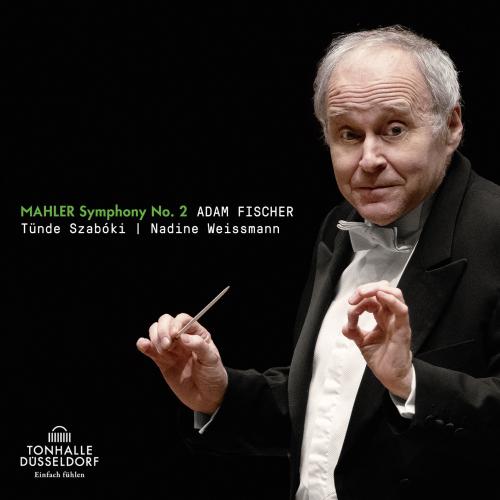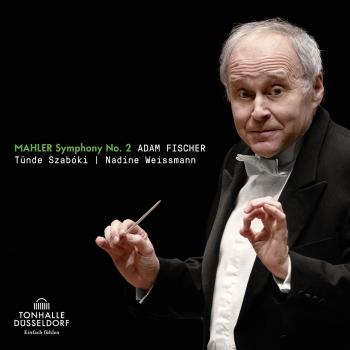
Mahler: Symphony No. 2 "Resurrection" Düsseldorfer Symphoniker, Tünde Szabóvski, Nadine Weissmann & Adam Fischer
Album Info
Album Veröffentlichung:
2019
HRA-Veröffentlichung:
19.02.2021
Label: CAvi-music
Genre: Classical
Subgenre: Orchestral
Interpret: Düsseldorfer Symphoniker, Tünde Szabóvski, Nadine Weissmann & Adam Fischer
Komponist: Gustav Mahler (1860-1911)
Das Album enthält Albumcover Booklet (PDF)
Entschuldigen Sie bitte!
Sehr geehrter HIGHRESAUDIO Besucher,
leider kann das Album zurzeit aufgrund von Länder- und Lizenzbeschränkungen nicht gekauft werden oder uns liegt der offizielle Veröffentlichungstermin für Ihr Land noch nicht vor. Wir aktualisieren unsere Veröffentlichungstermine ein- bis zweimal die Woche. Bitte schauen Sie ab und zu mal wieder rein.
Wir empfehlen Ihnen das Album auf Ihre Merkliste zu setzen.
Wir bedanken uns für Ihr Verständnis und Ihre Geduld.
Ihr, HIGHRESAUDIO
- Gustav Mahler (1860 - 1911):
- 1 Symphony No. 2 in C Minor "Resurrection": I. Allegro maestoso. Mit durchaus ernstem und feierlichen Ausdruck 20:37
- 2 Symphony No. 2 in C Minor "Resurrection": II. Andante comodo. Sehr gemächlich. Nie eilen. 09:38
- 3 Symphony No. 2 in C Minor "Resurrection": III. In fliessender Bewegung 10:50
- 4 Symphony No. 2 in C Minor "Resurrection": IV. Urlicht. Sehr feierlich, aber schlicht. Nicht schleppen 05:21
- 5 Symphony No. 2 in C Minor "Resurrection": V. Im Tempo des Scherzos. Langsam misterioso 20:23
- 6 Symphony No. 2 in C Minor "Resurrection": V. b. Langsam misterioso 14:08
Info zu Mahler: Symphony No. 2 "Resurrection"
"….“ Apart from these considerations in terms of content, Mahler’s Second Symphony has special significance for me – for entirely different reasons.
The first reason is biographical. Mahler finished writing the first movement in Budapest where he was musical director at the opera. When I was likewise general music director at Budapest Opera, I imagined that Mahler had sat in the same room and gotten angry over the same things as I did. Work at the opera must have been so nerve-wracking that he found no time for anything else. I can only confirm that.
A second thought leads me to Haydn. We know that famous quote from Hans von Bülow, who is reported to have exclaimed that Wagner’s Tristan, compared with the first movement of Mahler’s Second Symphony, was as tame as a Haydn symphony. This mainly leads me to think that von Bülow was probably not yet aware of the direct connection that leads from Haydn to Mahler, which I sense. As far as I am concerned, Mahler is just as much a part of Vienna Classicism as Haydn.
The third personal story has to do with the third movement, which is based on Mahler’s song Saint Anthony of Padua’s Sermon to the Fishes. For the past thirty years I have been working in favor of a series of human and citizens’ rights organizations. I find that no other piece better describes the dilemma experienced by these organizations and movements than Mahler’s song. I am most probably not the only one to feel that it exactly describes what we experience in our work: we preach, we are applauded and praised, and then everyone goes on doing things as before. The song symbolizes our engagement with the citizens’ rights movement, and after all we have endeavored to set in motion I am terribly disappointed with the lack of results. Yet something in the song still comforts me: I am always glad to hear that the fishes at least “liked the sermon”, as it says in the end. . ..……….. (from Adam Fischer’s preword of the Booklet)"
Düsseldorfer Symphoniker
Adam Fischer, conductor
Keine Biografie vorhanden.
Booklet für Mahler: Symphony No. 2 "Resurrection"













